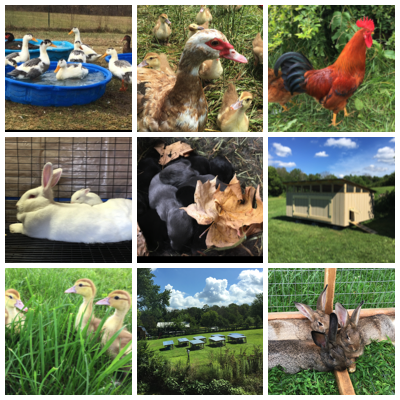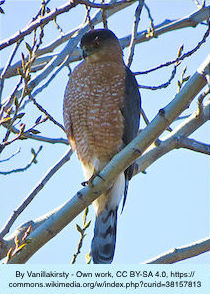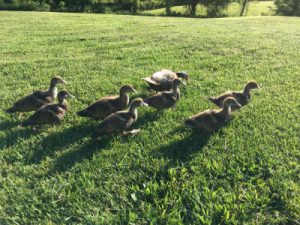There’s much debate about the merits of keeping a rooster in a dual-purpose or primarily layer flock. We’ve chosen to keep a flock rooster (and would actually like to have two, if they could get along in the long-term), but have learned some things along the way.
When we first started our flock of chickens, we purchased straight run chicks and ended up two males (out of 18). That’s a ridiculously low proportion of cockerels to hens, but we were tickled. What luck!
Continue reading “The Importance Of Choosing The Right Rooster”

 We live in an area that is rife with predators, and have shared stories of losses to owls, foxes, and hawks. We’ve had close calls with loose dogs, too. This is what seems to be the most challenging time of year for protecting our free ranging poultry, so we have to stay on our toes.
We live in an area that is rife with predators, and have shared stories of losses to owls, foxes, and hawks. We’ve had close calls with loose dogs, too. This is what seems to be the most challenging time of year for protecting our free ranging poultry, so we have to stay on our toes. It’s that time again – this year is coming to its end. We like to look back at the year because you can forget how much you learned and during that period. We also like to recognize our accomplishments, as well as identify needed improvements. We characterize 2016 as our year of learning on the farm.
It’s that time again – this year is coming to its end. We like to look back at the year because you can forget how much you learned and during that period. We also like to recognize our accomplishments, as well as identify needed improvements. We characterize 2016 as our year of learning on the farm. With this cold weather, we like to take extra treats out for the chickens and ducks. When we went out this afternoon with scratch, we noticed that the adult chickens were nowhere to be seen…very odd. The juvenile chickens were huddled in the back corner of the barn, and when we got closer, a hawk flew up and into the rafters. To our dismay, we discovered that the hawk had killed and had been eating one of the juveniles – a nice New Hampshire Red pullet, of course, one of the friendliest of the bunch. It had eaten much of the pullet’s head, which was detached, and had plucked most of the breast. *&#@ hawk!
With this cold weather, we like to take extra treats out for the chickens and ducks. When we went out this afternoon with scratch, we noticed that the adult chickens were nowhere to be seen…very odd. The juvenile chickens were huddled in the back corner of the barn, and when we got closer, a hawk flew up and into the rafters. To our dismay, we discovered that the hawk had killed and had been eating one of the juveniles – a nice New Hampshire Red pullet, of course, one of the friendliest of the bunch. It had eaten much of the pullet’s head, which was detached, and had plucked most of the breast. *&#@ hawk! Coraline’s babies will be six weeks old tomorrow, and they sure look different from the yellow and brown puffballs they were not so long ago. Their color has changed significantly: now, they’re predominantly brown, and a few have white chests. They’re about half Coraline’s size (a couple are larger), and very curious about the world outside their run.
Coraline’s babies will be six weeks old tomorrow, and they sure look different from the yellow and brown puffballs they were not so long ago. Their color has changed significantly: now, they’re predominantly brown, and a few have white chests. They’re about half Coraline’s size (a couple are larger), and very curious about the world outside their run.